Scientific Facts
| Common Name: | Polish Rabbit |
| Scientific Name: | Oryctolagus cuniculus |
| Life Span: | 5 to 6 years |
| Size (Adult): | Dwarf |
| Weight (Adult) | 2.5 to 3.5 pounds |
| Habitat: | Human homes, gardens, pet shops |
| Body Shape: | Compact |
| Country of Origin: | England |
Physical Description
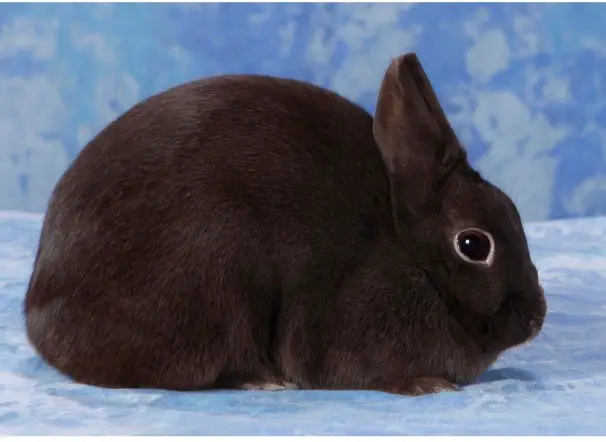
The Polish rabbit is a fancy breed of domesticated rabbits. This is not a dwarf rabbit breed because this lacks the dwarf gene. This is a breed that’s bred by fanciers and not by hobbyists, which means these are developed for show purposes. Lately, this rabbit breed is mostly found in human homes because, aside from its winning looks, it also has calm, friendly, and docile behavior making it a good breed as pets.
The Polish rabbit is a fancy breed featured in exhibitions and as a pet. It is small, with very short ears that may touch each other from the base of the head to the tip. This has a remarkably short head and has full cheeks and lovely bold eyes.
Because of its small size and body, it is confused with another stunning breed, the Netherland Dwarf. The Polish rabbit has a larger head and a less rounded head than the Netherland Dwarf breed. Also, the coating structure, body size, and type, as well as the colors, differ.
Adult Polish rabbits weigh from 2.5 to 3.5 pounds with an ideal weight limit of 2.5 pounds. The Polish rabbit has soft, short, and flyback fur that is very easy to groom and maintain. You must groom it at least once a week and more frequently during the molting season.
When it comes to coating color, there are six accepted colors by the American Rabbit Breeder’s Association or ARBA: Ruby-Eyed White rabbits or REW, Blue-Eyed White rabbits, chocolate, black, blue and broken which is any color with a white background.
History of the Breed
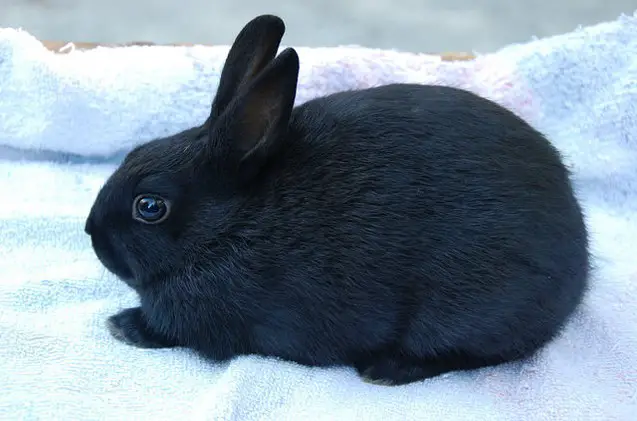
The Polish rabbit is not from Poland. It originated in England from albino Dutch Rabbit parents. During the early 1800s, white rabbits with a small size and with mixed origins appeared in England, and these were called “Polish” rabbits by breeders.
It was also thought that the Polish rabbit originated from a Dutch and a Himalayan. Breeding the two rabbit breeds was thought to be done in the 1600s. In the 1900s, the Polish rabbit is one of the most popular rabbits bred for meat in Europe. And after appearing in US shores, it was soon accepted by the ARBA as a special breed.
Fast Facts
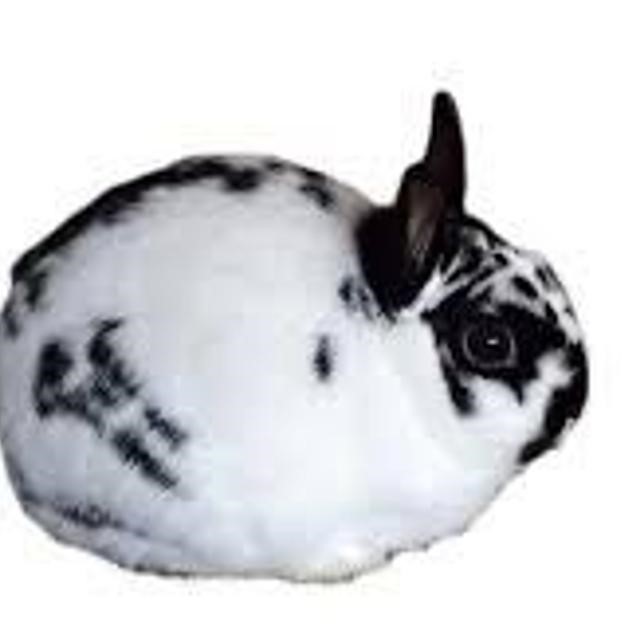
Another name for the Polish rabbit in the US is the Britannia Petite. The “Polish” rabbit breed is unknown in the UK. Also, until the 1950sm, most Polish rabbit species in the US were white and had red or blue eyes. The REW is a true albino of this breed.
Meanwhile, the true blue-eyed white breed is not a true albino. During the 1950s, colored Polish rabbits were already recognized by various rabbit clubs. IN 1957, ARBA recognized the chocolate and black varieties. The blue was recognized in 1982 and 1998; the broken variety was finally recognized as well.
Reproduction
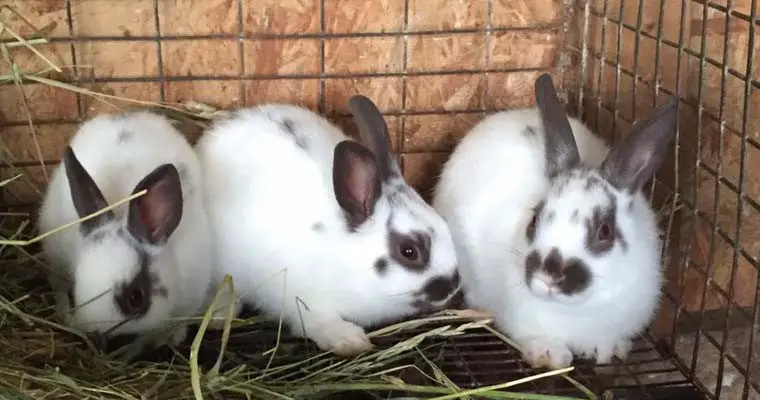
Polish rabbits reproduce just like any other captive or domesticated rabbit breed. Rabbits can reproduce when they are 8 months of age, while some breeders report bucks reproducing as early as 5 months. Also, rabbits are capable of reproducing all year long and do can become pregnant three to four times a year.
Forced breeding is common in captivity. This is when the male and female are introduced in one cage. The male is housed in a cage, and the female is added after a week. Breeders say that this increases the success in breeding. The female usually freezes or remains still as she is sniffed and inspected by the male. If she does not want the male’s advances, she will run away, but the male usually follows and catches up.
Mating happens when the female gives in, lets the male sniff away, and mounts her. The male may aggressively thrust in the female and may also fall back on her. Mating is successful when the male leaves the female alone. Also, some rabbits may thump their hind feet after a successful mating.
You may remove the female after a day and place her with other females or in a separate cage. Gestation is up to 38 days, and soon, she will lose interest in eating, drinking, and socializing, and this can only mean that it will soon give birth.
At this time, the female rabbit will look for a suitable nest, a place where she can deliver her babies safely. She will use hay to line the nest and her own fur and other materials nearby to create a warm and safe nest. After a few hours, she will likely deliver her kits. These will be born naked, deaf and blind and thus very vulnerable to predators. Even in captivity, the female will hide her nest to protect her babies. But she won’t stay too long in her nest. She will only return a few minutes in the nest to nurse her babies. After a few days, the babies will open their eyes. On day 10, these will wean from their mother and will leave the nest.
Fun Facts
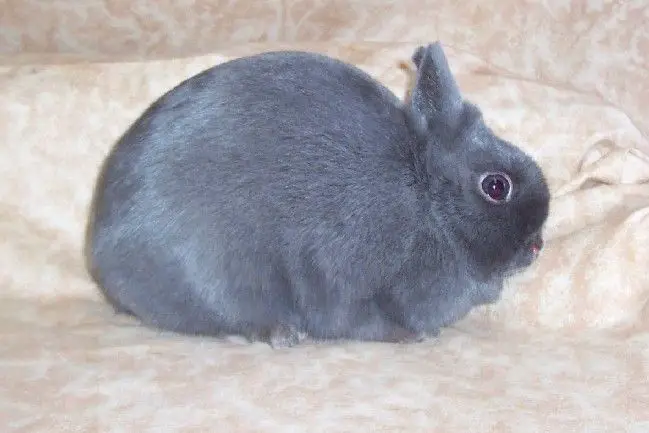
The Polish rabbit is a good pet for singles, families with older children, first-time rabbit owners or pet owners, and also for seniors. This is because of its small and compact size and due to its calm, friendly, and docile behavior.
But not all domesticated rabbits are immediately docile and friendly. Some still need the training to hone their friendly and calm nature. You may use treats, food, and toys to help your rabbit come out of its shell and trust you as his owner.
Personality and Behavior
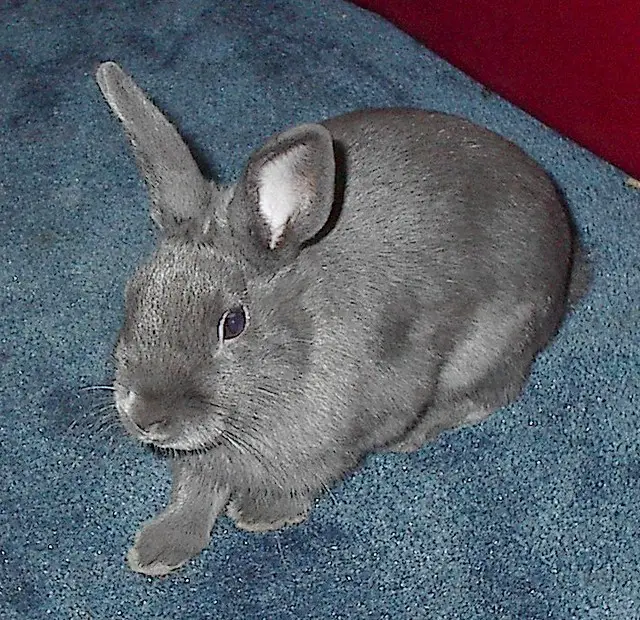
Smaller rabbits like the Polish rabbit are a cute but not really good size for young children. Smaller kids may accidentally drop them, and this is the last thing you want to happen in a dwarf rabbit breed. Dropping this rabbit even from a small height can break their bones and may even kill them. So this breed should be in homes with careful owners, in families with older kids, seniors, and in adult first-time pet owners.
The Polish rabbit loves attention and doesn’t mind being picked up and held as long as you’re careful, and it trusts you as well. This rabbit can chew, and it may chew on your wooden furniture, paper, books, and cardboard. So, provide toys, hay, or other items it can chew on. Rabbit-proof your home before you let this rabbit out of its cage.
Comparable Breeds
The Polish rabbit is comparable to two small rabbit breeds, namely the Dutch rabbit and the Netherland Dwarf Rabbit. The Dutch rabbit may be small but has an easy-going, calm, and friendly temperament. It weighs less than 6 pounds and has a compact body. Because of its wining features and great personality, it is best for families with young children, singles, seniors, and also for people who live in small homes like in an apartment.
On the other hand, a Netherland Dwarf Rabbit is a dwarf size rabbit breed that weighs less than 3 pounds. It has a compact body shape and can live up to 12 years. It is quiet, shy, and skittish, but with constant training, you’ll be able to coach this rabbit out of its comfort zone.
Care of Polish Rabbits
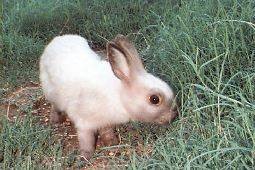
Polish Rabbits are cared for just like regular rabbits. As long as you provide the correct diet, the right enclosure, good companionship, and proper medical treatment, then you’re going to be okay.
An important part of this rabbit’s diet is hay. Hay is the bulk of a rabbit’s diet, but you may also feed your rabbit pellets for rabbits. Commercially-prepared pellets come with added vitamins and minerals for your rabbit’s good health. You may also include small pieces of vegetables and fruits to create a well-rounded and healthy rabbit diet.
Leave fresh water and hay inside the enclosure. Hay is also an important part of a rabbit’s diet because it’s rough and can help keep their digestive tracts regular. You must place water in a heavy shallow dish so your rabbit can easily drink without spilling and messes.
Be sure that your pet is eating the right kind of food and the right food is safe food. Protect it from pesticides, toxins, and herbicides with organic fruits and vegetables on the menu. Younger rabbits may eat calcium-rich alfalfa hay, which is needed for growing bones. On the other hand, adult Polish Rabbits will eat legume hay.
Polish Rabbits are very lovable and calm pets, but you must train them well to earn their trust. Interact with your pet rabbit by playing, grooming, and feeding it. Rabbits are social animals and will need companions aside from interacting with their owners. Rabbits that grow up with constant companions and interactions with their owners are healthier, happier, and are likely to be friendly and well-rounded.
Polish Rabbits are like all rabbits when it comes to grooming; they are very meticulous. Rabbits will groom themselves to the point that it will take hours before they’re done. Rabbits may groom each other and experts to say that this or a good way to bond with other rabbits. Meanwhile, mother rabbits will groom her newborns right after delivery. But this behavior won’t last long because she will immediately leave the nest. She will only come back in the evenings to nurse them.
Polish Rabbits are very active in the daytime and sleep in the evenings, just like people. With this in mind, feeding a Polish Rabbit should be done in the morning and not in the evenings. Usually, rabbits sleep 8 hours a day and may sleep together to keep warm.
Supplies and Cages

The enclosure for Polish Rabbits should be constructed out of wire and must have a strong frame. The bottom should be removable to make it easier to clean the cage. The floor of the enclosure should have soft bedding so that it is comfortable for your rabbit to stay. You may use hay, wood pellets, or horse bedding. Don’t use paper towels, newspapers, or brown paper bags because this can tear up and won’t be good cage bedding.
To clean the cage, remove your pets and place these in a safe and clean enclosure. Clean the cage with a safe cleaner or natural cleaning product like white vinegar, baking soda, or lemon. Do not use commercial cleaners because these may have toxic ingredients that can affect your pet’s health.
Also, consider having a separate or extra cage to take care of baby Polish Rabbits. These rabbits are naked, deaf, and blind and thus will need a warm enclosure to keep them at the right temperatures. A smaller enclosure with a cage lamp or lighting is a good way to keep kits.
Finally, Polish Rabbits will love chewing on things, and if these are kept indoors, these will chew on anything made of wood such as walls, fixtures, and furniture. This can also chew on electrical wiring and can easily become electrocuted. To prevent accidents, provide hay or chew toys inside the cage.
Health Concerns
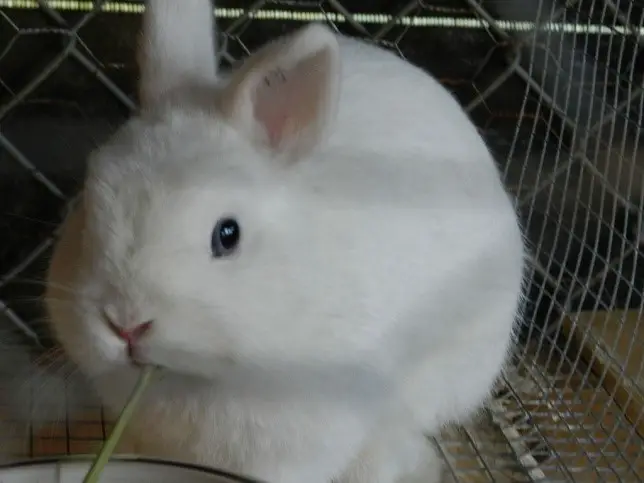
A Polish Rabbit is a healthy breed and doesn’t have any specific disease. The most common conditions that the Polish Rabbit may be affected with are pests that are commonly found in their natural environment.
Meanwhile, these rabbits are not free from common rabbit diseases, so you must monitor your rabbit’s health and temperament because change can be due to an illness. Therefore, as early as your pet can open its eyes, take it to the vet for standard vaccinations.
Your vet will also subject your rabbit to tests to assess the overall health and development of your rabbit. Keep in mind that there are rabbits with sensitive digestive systems and could be prone to health conditions that affect the gut, such as enteritis, bloat, and stasis. These conditions may affect rabbits that are less than two months.
Watch out for ear or fur parasites, and the most common are mites, fleas, and ticks. Usually, rabbits that are affected by these parasites have poor hygiene and are kept in dirty enclosures.
Another important part of taking care of rabbits and other pets is deworming. Polish Rabbits must be treated for worms once a year and should be done in the springtime and fall. This is a major concern, especially with rabbits that come from the wild or those that are bred from wild parents. All rabbit breeds should be dewormed. Use a deworming paste and use a pea-sized amount and put this in the rabbit’s mouth, and the rabbit will continuously lick and swallow the medication.
Dental Care
A Polish rabbit’s teeth will continue to grow, and sometimes, their teeth can grow to extreme lengths resulting in severe pain as it pierces the mouth and gums, causing pain and discomfort. As an owner, you must make sure that the rabbit’s teeth don’t overgrow.
Place more hay inside their enclosure by offering hay because this files down the rabbit’s teeth naturally while the rabbit chews. You may place pieces of wood, baskets, or other accessories that can help fill the rabbit’s teeth naturally. Monitor your rabbit’s dental health to save on expensive dental bills in the future.
Spaying or Neutering
Rabbits like the Polish rabbits are very promiscuous, and a responsible pet owner will control this by spaying or neutering their pet or pets. Spaying and neutering are done at a young age, but some veterinarians wait until the rabbits are six months old. Polish rabbits bucks are also neutered at a young age because some vets say that neutering can reduce aggression. Some vets will neuter Polish rabbit bucks as young as three months. For any question about spaying and neutering, talk to your vet.
Grooming
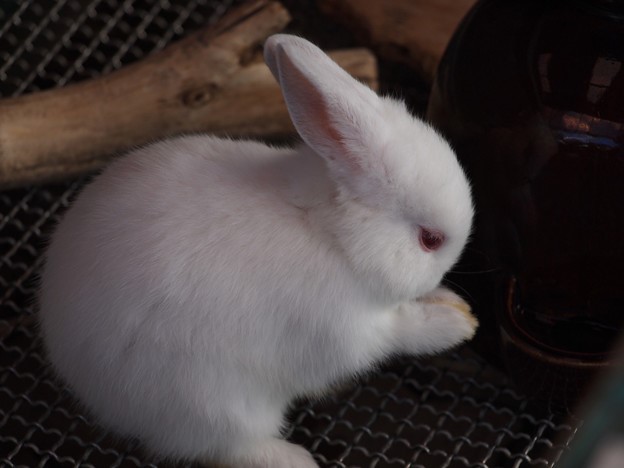
Polish Rabbits have short to medium-sized furs depending on the color and the smoothness of the coat. But no matter what color of rabbit you have, You must regularly groom. Brush the fur to keep it clean, shiny, and free from pests. Use a small brush and groom your pet at least once or twice a week.
Grooming should be done more frequently during molting to prevent wool blocks and to keep the rabbit from eating their fur. Fur can accumulate in the digestive tract, and this can lead to blockage and complications, so groom your rabbit to avoid the wool block.
And if your rabbit is very dirty, avoid a bath because this can cause a lot of stress. Use a damp towel to spot clean dirt. Just wipe the rabbit down with a damp towel and use a dry one to finish. Trim your rabbit’s nails and check its mouth for overgrown teeth.
Availability – Where to Get One?
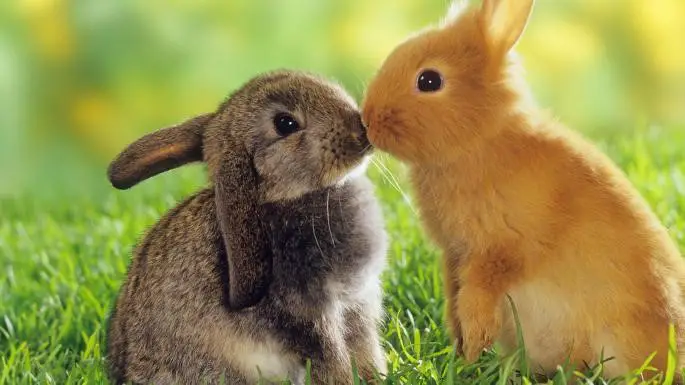
The cost of a Polish Rabbit may depend on whether you are getting a rabbit from a breeder or a retailer. The price will also vary whether you are getting a rabbit for a pet or show. You can expect the price to vary depending on gender, size, coat quality, and overall appearance.
A reliable breeder breeds healthy rabbits with no genetic disorder. Purchase only from reputable breeders who raise healthy Polish Rabbits. A Polish Rabbit may be seen in trade fairs and countless events. Also, there are shows and contests by the ARBA that feature this breed as well as other compact and commercial breeds.
How to Care for a Polish Rabbit
This is a summary of how to care for a Polish Rabbit breed. Caring for this breed is just like caring for other breeds. There are four components of its care: the correct diet, housing, companionship, and vet care.
Keep in mind that the food of captive-bred rabbits is hay. Hay is important because it has many uses. The rabbits can chew this to grind their growing teeth, to keep their digestive system healthy, and to create regular bowel movements. You may also use pellets for rabbits, vegetables, and fruits for a healthy rabbit diet. You may also give them food in their natural habitats such as grasses, twigs, birch, seeds, and weeds.
You must always keep clean water and hay available inside the rabbit’s cage. You must place water in a large, heavy shallow dish so that your rabbit can drink from it, and because the bowl is heavy, the rabbit won’t knock it over as it moves inside the enclosure.
Take the time to train it. It would help a lot if you train and interact with your pet daily. Also, captive rabbits are social animals, and a rabbit companion or companions is essential. So if you lack resources, space, and patience to care for two or more rabbits, then this is not the right pet for you.
Your pet Polish rabbit can grow healthy, with good temperament and a docile behavior when it socializes with some cage mates and with you, its owner.
And of course, you should take your pet to the vet. It needs regular vaccinations, and tests to determine wellness and to rule out different illnesses.
FAQs
Can you keep a Polish Rabbit as a pet?
Yes, you can keep a Polish Rabbit as a pet because it has a calm, sweet, and docile behavior and temperament. It is a good pet for families but not for families that have small children because of the dwarf size of this breed.
Are Polish Rabbits carnivorous?
No, these rabbits are not carnivorous and are herbivores, which means that these will never eat meat. It will only eat plants or plant parts such as roots, leaves, flowers, twigs, bark, stems, seeds, and many more.
What do Polish Rabbits eat?
Polish Rabbits are herbivorous and will eat plants only. These will eat all plant parts like roots, bark, seeds, weeds, flowers, and leaves. In captivity, it can eat commercially-prepared rabbit food or pellets, vegetables, and fruits, seeds, and nuts.
How do you tame a wild rabbit?
You should never attempt to tame a wild rabbit because you might end up getting hurt. You can train a captive-bred rabbit instead because this rabbit has a docile behavior and are calmer compared to wild rabbits. These may still need constant handling and interaction to remain tame, happy, and healthy despite being in captivity.
Where do Polish Rabbits live?
A Polish Rabbit is not found in the wild because these are domesticated rabbits. These rabbits live in human areas and commercial areas like breeding kennels, pet stores, and human homes. For Polish Rabbit pets, the rabbits may be housed in a large cage that may be placed indoors or outdoors, preferably in groups for socialization.
Should you get a wild rabbit from the forest?
Don’t take a wild animal like a rabbit from the forest. This has a wild nature and may not be good pets. Also, these rabbits can have rabies. If you see an injured rabbit in the forest, you may call animal services for help.
Can Polish Rabbits swim?
Yes, Polish Rabbits can swim, but this is not as good as other animals who live near and in water. However, most rabbits do not want to get wet because water can stress them.
Are Polish Rabbits endangered?
No, Polish Rabbits are not endangered. Large numbers of Polish Rabbits are available from local and international breeders, pet shops, and in human homes where these are treated as dear pets.
Do Polish Rabbits eat fruits and vegetables?
Yes, Polish Rabbits can eat fruits and vegetables. And you may also feed your Polish Rabbits rabbit pellets or rabbit food, which have added nutrients that your pet needs every day.
Will Polish Rabbits eat their poop?
Yes, just like all rabbit breeds, Polish Rabbits will eat their poop because they think that this still has nutrients in them. But after eating this once, they won’t do it the second time. No one still knows why rabbits do this, and you can prevent this by removing their droppings as soon as you spot them.
Can you keep two or more Polish Rabbits in a cage?
Yes, you can keep two or more rabbits in one cage as long as their cage is large to keep your pets in. Keep in mind that the cage must be large, comfortable and safe so your pet rabbits can remain inside comfortably and safely
How do you maintain and clean a Polish Rabbit’s cage?
You must first remove the rabbit inside the cage and place it in another clean cage or temporary container. Remove the pan where the poop is in and dispose of the droppings properly. Use a hose, a brush and cleaning product and clean the walls, bottom, accessories as well as the rabbit toys. Make sure that everything is dry before placing your pet back inside the cage and adding new hay and bedding.
Do you place a Polish Rabbit’s cage indoors or outdoors?
You may place the cage of your pet indoors to protect it from the elements, but indoor cages tend to be small and may not be enough for several adult Polish Rabbits. When you erect your cage outdoors, the rabbits may have to deal with the cold, but at least they will have a large area to play in.
Do you need to place a heater inside a Polish Rabbit’s cage?
You may use a cage lamp to give heat. But during extremely cold climates, you should use a small portable heater and put this near the rabbit cage for a comfortable place for your pet. This is important also for hibernating or warming baby or newborn rabbits.
Can Polish Rabbits remain outdoors?
A pet Polish Rabbit may be allowed to remain outdoors, but you must rabbit-proof your yard first. A portable perimeter fencing is perfect for limiting the area where the rabbit can roam free, play, and socialize. Bury the poles to prevent the rabbit from digging it out and escaping.
How large should a Polish Rabbit’s cage be?
A single Polish Rabbit must be placed in a large enclosure because it can be very energetic. For two rabbits, double the size of the area. You must never overlook the size and make sure that your rabbits have enough space to play, eat, and sleep together.
How do you take care good care of a baby Polish Rabbits?
If you want to breed Polish Rabbits, place the kits in a safe, comfortable, and warm enclosure. Feed them soft, pureed food and keep these safe and warm. For wild-caught bunnies, you must call animal services to have these rescued properly.
Can you leave Polish Rabbits indoors to play in your home?
Polish rabbits are very active, and you should allow a rabbit to stay indoors but only under full supervision. You must use a portable perimeter fence to keep off areas that the rabbit can’t go. Remember that you have to rabbit-proof your home before you let your rabbits out of their cages.
Are Polish Rabbits territorial?
Breeders say that Polish Rabbits may become territorial when these are placed in a small enclosure. Males may develop aggressive behavior towards other males, especially during the breeding season. These rabbits may bite, scratch, and kick their opponents to establish hierarchy.
What happens when the teeth of the Polish Rabbit grow longer?
When the teeth of your pet grow longer, this can pierce its mouth and gums, and this can lead to a lot of pain, and pain can also affect its appetite. This is why your pet rabbit should visit a dentist regularly. Also, offer hay since this can grind their teeth and keep it short as the rabbit chews.
How many times do rabbits need to visit the vet?
Rabbits should get a check-up at least twice a year. Young rabbits must be vaccinated against rabbit diseases as early as they are weaned from their mother, and they need to have an initial visit to a vet as early as a few weeks old.
Are Polish Rabbits bites fatal to humans?
Yes, Polish Rabbit bites and the bite of all rabbits are dangerous because these animals may have rabies. The rabbit teeth are huge and can easily tear off the flesh, which leads to a deep or even infected wound. Visit your doctor if you have been bitten by a rabbit.
Will a mother Polish Rabbit eat her young?
Some breeders have noticed this behavior, and they are still unaware of why the mother rabbit eats their young. But if you spot the mother Polish Rabbit eating her young, remove it from the litter or nest and never let this breed again.
Can rabbits deal with the cold?
Yes, wild rabbits may remain in a cold environment, and they can survive by foraging food that’s under the snow. Rabbits will use their legs to dig out snow and eat unfrozen roots, shrubs, seeds, and other unfrozen edible morsels that they can find.
Can Polish Rabbits escape their cages?
Yes, despite their size, the Polish Rabbit can escape their cage by kicking or knocking their cages and escaping. These rabbits can’t jump over and escape but will use force and can even destroy flimsy cage materials.
Can rabbit diseases affect humans?
Some rabbit diseases can affect rabbits, while some may be dangerous to humans. If your rabbit is sick, you must take it to the vet at once. You must also know how to check for the different signs of illnesses such as lack of appetite, diarrhea, constipation, sneezing, problems with breathing, and any change in behavior. Take your pet to the vet as soon as possible.
Will rabbits eat insects or insect larvae?
No, rabbits won’t eat insects. This will eat only plant and plant parts, rabbit pellets, fruits, seeds, nuts, vegetables, and hay. Just make sure to provide organic produce to avoid chemicals and toxins, which can be toxic to your pet rabbit.
Where do rabbits sleep in the wild?
In the wild, rabbits may sleep in warrens, a name for rabbit burrows. They burrow as deep as several inches and make channels, tunnels, and dens. Rabbits can also sleep inside these warrens. In captivity, they must live in an enclosure that can accommodate many rabbits but are safe from predators.
Do Polish Rabbits have good hearing?
Despite the Polish Rabbit having smaller ears compared to other breeds, this has good hearing. It can hear predators from far away and thus has time to jump and escape the enemy.
Can rabbits see well in the dark?
Yes, al rabbits have good vision at night. This is why some species prefer to look for food at night. Rabbits such as the Polish Rabbit have a good sense of smell and hearing to let them recognize predators that are nearby.
Can you prevent a Polish Rabbit from eating his poop?
You can stop a rabbit from eating poop by removing the poop right away. But no matter what, these animals will still eat their dropping because they know that this still has nutrients in them.
Will it hurt when a Polish Rabbit hits you with its hind legs?
Yes, despite the size of a Polish Rabbit, this may still have had very sharp claws on its hind feet. This can hit you very hard with its hind feet, which can inflict damage. The rabbit will only do this when it feels threatened or nervous. Tame and docile rabbits won’t hurt you if it trusts you.
Are all females cannibals?
Eating their young is a weird behavior in some rabbit breeds. Experts say that this happens due to the female being hungry or thirsty after giving birth, and there is not enough water or food in the enclosure. Also, some breeders say that females will do this when the baby is stillborn to remove any traces of tissue, blood, and smell in the nest and to protect the remaining babies from predators.
How young do you spay or neuter a rabbit?
Spaying and neutering are important, and since rabbits become sexually mature early, spaying and neutering are done early as well. The age depends on the vet, but some bucks are neutered as young as 3 months while some vets will wait till these are 5 months.
Can pet rabbits be patient with young children?
Some rabbits are very nervous and don’t want to be held uneasily by young children. Some are calm, docile and friendly and would be fine being held and petted even by young children.
Will your pet rabbit tolerate the cold?
Some rabbits can survive the cold and will even play in the snow. Some rabbits can survive by changing their fur color to adapt to the winter climate and lack of green and brown foliage; however, some may not survive, such as desert rabbits.
Can you place the cage of Polish Rabbits near other pets?
Yes, you can do this because Polish Rabbits are very friendly, docile, and calm. Having their cages near other rabbits and even other animals is not a worry for them at all.
What to do with abandoned baby rabbits?
For abandoned wild kits, contact animal service. You should never get baby rabbits from the wild to become your pet.
Can you train a pet rabbit to wear a collar and leash?
Some owners say that they were successful in training their pet rabbits to wear a collar and a leash, but some say that their rabbits won’t submit, and this may depend on the breed.
Will Polish Rabbits recognize their owners?
Some rabbit owners say that their pets can recognize them. Some say that their rabbits can tell if they are being handled by their owners or by other people.

